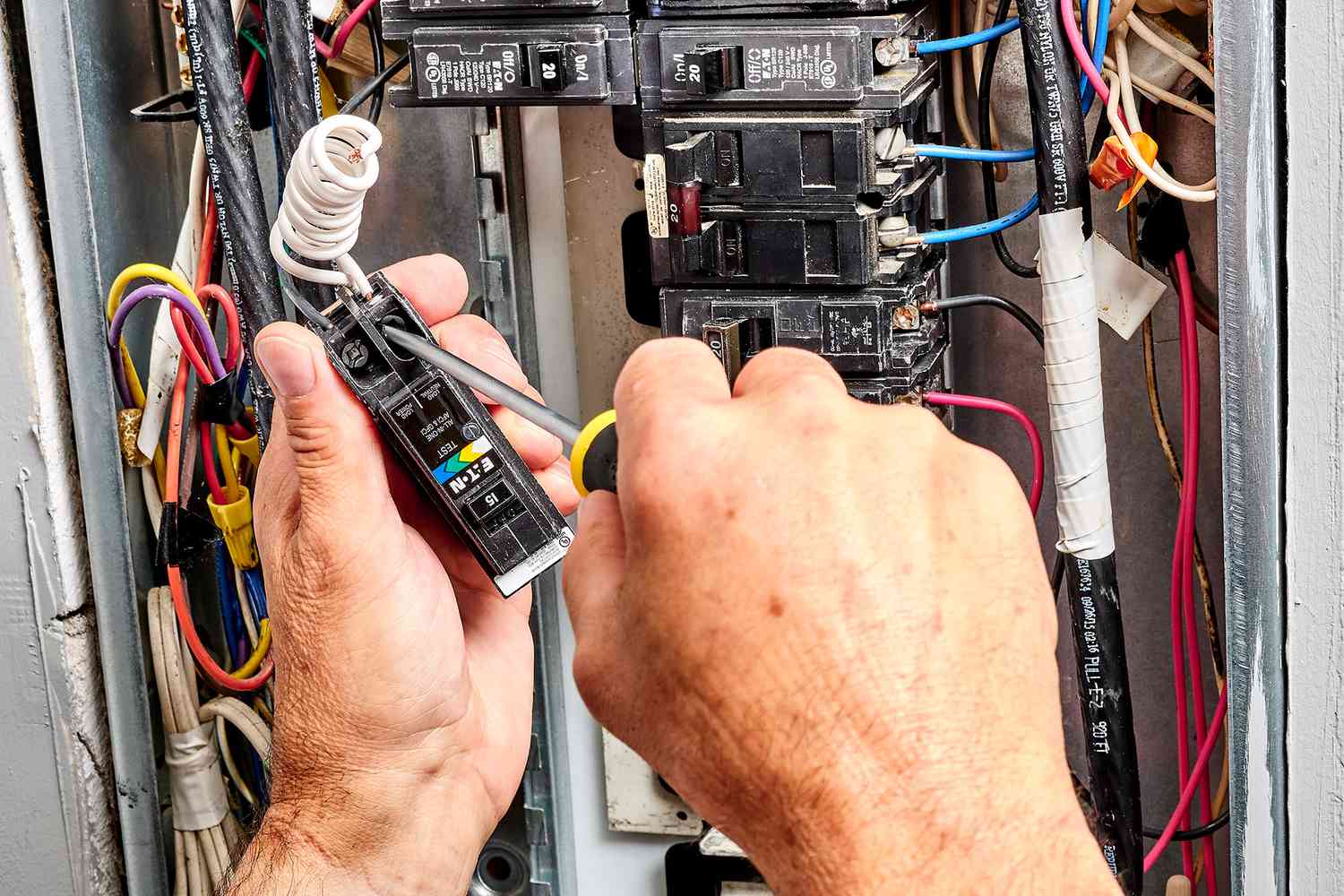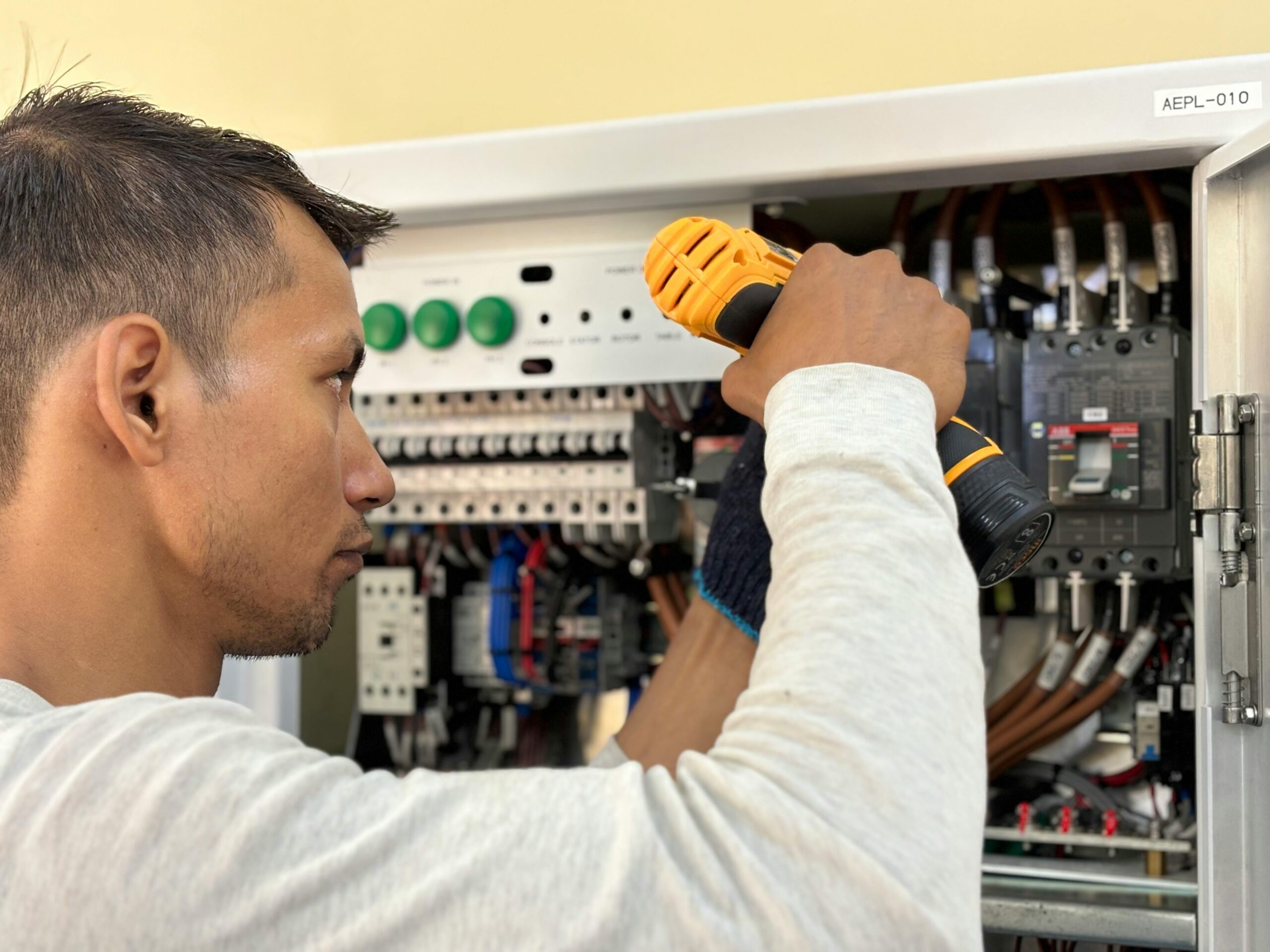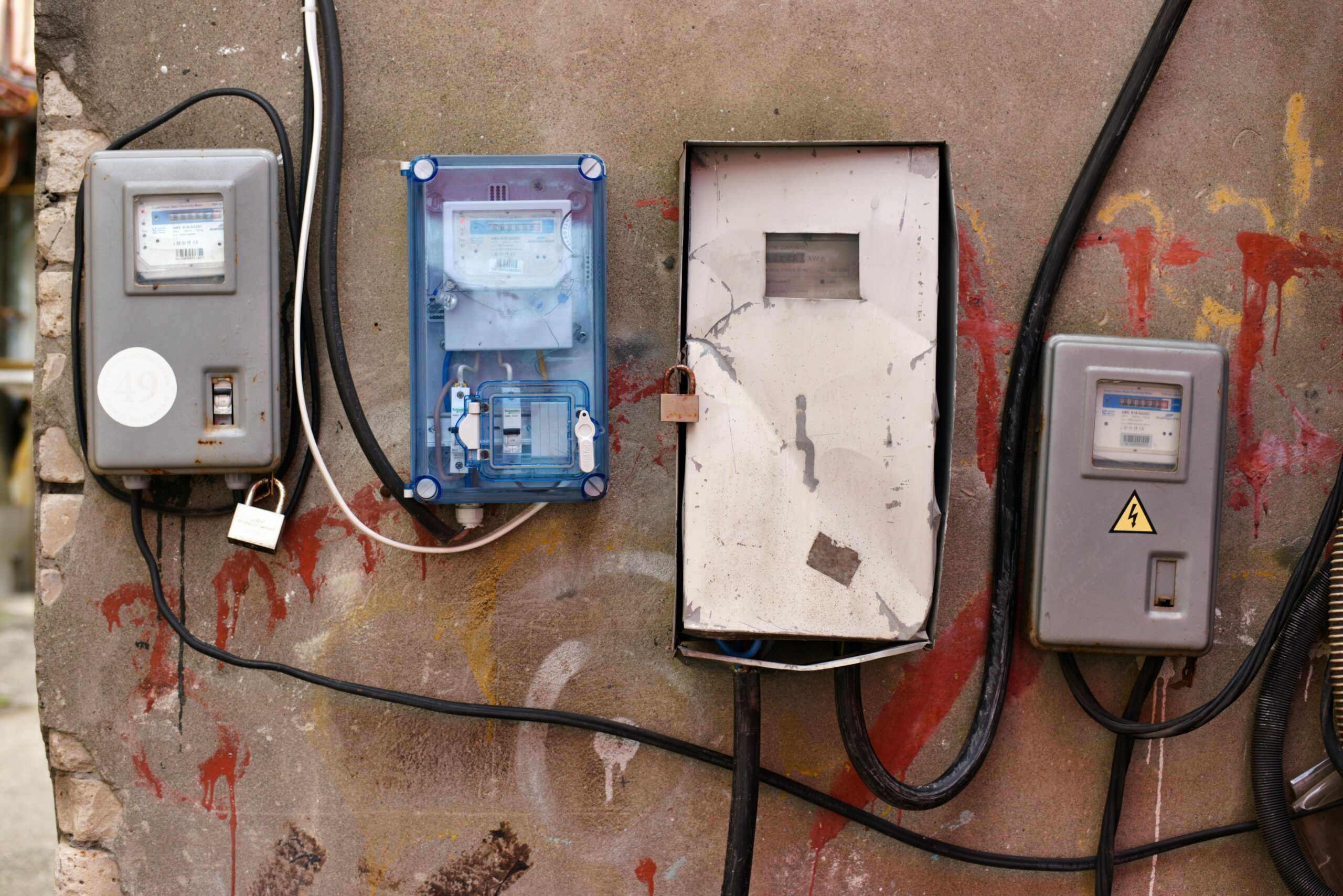Arc Fault Circuit Interrupters (AFCIs) are essential to modern electrical systems, protecting against fires caused by electrical arcs. These types of fires can quickly start within the walls of a building and often occur due to damaged or worn wiring, making them difficult to detect.
We’ll cover everything you need to know about AFCI protection, including what it is, why it’s essential, and how to install and maintain it. We’ll also look at the historical development of AFCI protection and its evolution over time.
Types of AFCI Protection
Regarding AFCI protection, there are three main types to consider: branch/feeder AFCI, combination AFCI, and outlet circuit AFCI.
- Branch/Feeder AFCI: This type of AFCI protection is installed at the electrical panel and protects all wiring and devices connected to a specific circuit. It detects and interrupts arcing faults between a branch circuit’s line and neutral conductors.
- Combination AFCI: A combination AFCI provides parallel and series arc fault detection and protection. This type of AFCI can detect low-level and high-current arcing, making it an effective way to protect against a wide range of electrical faults.
- Outlet Circuit AFCI: Outlet circuit AFCIs are installed in the first outlet box of a branch circuit and provide protection for all downstream outlets. They detect and interrupt arcing faults between an outlet circuit’s hot and neutral conductors.
How AFCI Protection Works
Modern electrical technology has given homeowners access to various innovative protective measures. One such measure is AFCI protection, a technology that can make a big difference in home safety. AFCI protection works by detecting and stopping electrical arcs in the home before they spark an electrical fire. This technology comes in two distinct forms: series and parallel.
Each has benefits and drawbacks. First, however, it is vital to understand which is suitable for your home. Factors such as electrical load, number of circuits, and varying types of electrical equipment may impact the effectiveness of AFCI protection, so it is best to consult a professional before installation.
AFCI Protection Code Requirements
The National Electrical Code (NEC) provides guidelines for ensuring the safety of electrical systems, and one such guideline is the requirement for AFCI protection. AFCI stands for Arc Fault Circuit Interrupter, and these devices are designed to detect and interrupt electrical arcs, which can pose a severe fire risk.
Many local codes and jurisdictions have also adopted these requirements to ensure safe electrical installations in their communities. However, it’s important to note that there are exceptions and exemptions to AFCI protection requirements, such as specific circuits exempted from AFCI protection or exceptions for particular types of installations.
AFCI Protection Installation
Installing AFCI protection is essential in maintaining the safety of your home’s electrical system. Here are the steps to install AFCI protection:
- Turn off the power to the circuit you’ll be working on.
- Install the AFCI breaker into the electrical panel. Ensure it’s the correct type for the circuit you’re working on.
- Connect the hot, neutral, and ground wires to the AFCI breaker according to the manufacturer’s instructions.
- Install the AFCI receptacle at the first outlet of the circuit. Make sure it’s the correct type for the application.
- Connect the wires to the AFCI receptacle according to the manufacturer’s instructions.
- Restore the power to the circuit and test the AFCI protection by pressing the “test” button on the breaker or receptacle.
Proper installation of AFCI protection requires specific tools such as a screwdriver, wire strippers, pliers, and a voltage tester. In addition, following the manufacturer’s instructions and adhering to local building codes are essential during installation.
Essential tips include using the appropriate AFCI breaker or receptacle for the specific circuit and ensuring compliance with wiring guidelines to ensure proper functionality. If there are any uncertainties or concerns about the installation, it is highly recommended to seek assistance from a licensed electrician for professional guidance and support.
AFCI Protection Maintenance
Regular maintenance of your AFCIs is crucial to ensure the safety of your home and loved ones. AFCIs protect your electrical system by detecting and stopping dangerous arcing faults that could lead to electrical fires. Signs that your AFCI needs maintenance may include frequent tripping or not working. These warning signs are important to address as soon as possible. While it’s best to have a licensed electrician perform maintenance, there are a few DIY tips to remember.
First, make sure all connections are tight and secure. If you notice any fraying or exposed wires, have them replaced immediately. Additionally, ensure that your AFCIs are free from dust and debris. Proper maintenance of your AFCIs will provide peace of mind knowing that you and your family are protected against electrical hazards.
AFCI Protection Troubleshooting
This step-by-step guide offers a systematic approach to troubleshooting AFCI issues, ensuring electrical safety and reliability. By following the provided steps, you can effectively identify and resolve problems with AFCI circuits, maintaining the integrity of your electrical system.
- Check for loose or damaged connections in the AFCI circuit.
- Inspect the circuit for any signs of damage, such as frayed wires or burnt components.
- Test the AFCI using a voltage tester to ensure proper power supply.
- Investigate recent changes or additions to the circuit that may cause electrical interference.
- Conduct a simulated fault test to check if the AFCI trips appropriately.
- Verify that the AFCI is compatible with the specific circuit configuration.
- Consult the manufacturer’s instructions and troubleshooting guide for further guidance.
One of the most frequent problems with AFCIs is nuisance tripping, which can occur when they sense an arc fault that doesn’t exist. Other issues include tripping during start-up or when a load is switched on/off. If you encounter these issues, it’s crucial to troubleshoot them promptly to ensure your home’s safety.
However, if you’re unfamiliar with electrical troubleshooting, it’s best to call a professional electrician. They’re equipped with the necessary skills and tools to detect and address AFCI-related problems, ensuring your home remains safe and secure.
AFCI Protection for Specific Applications
AFCI protection has become increasingly important daily as electronic equipment and appliances have multiplied. For high-risk areas such as kitchens, it is crucial to install AFCI protection. This feature can detect any arcing caused by damaged wires in the electrical system, and it can shut off the circuit before a fire can start. Similarly, outdoor circuits are vulnerable to damage, especially during a storm or windy day.
That is why AFCI protection is equally important in this situation. Home offices have become vital as people work from home more frequently. In addition, it is essential to ensure that electronic equipment is protected from any unusual electrical activity that may cause a fire hazard.
AFCI Protection vs. GFCI Protection
Ensuring the safety and protection of your home’s electrical system is crucial to prevent appliance accidents or damage. Two types of protection are vital to this process: AFCI and GFCI protection. AFCI protection safeguards against property damage and injury caused by arcs in electrical wiring, while GFCI protection minimizes the risk of electric shock. Knowing when to implement AFCI or GFCI protection is important since each device serves a different safety function.
Sometimes, combination devices, which feature AFCI and GFCI protection, may be the best option. However, familiarizing yourself with AFCI, GFCI protections, and their functions is essential to ensure you take the optimal safety measures for your home’s electrical system.
AFCI Protection FAQs
What is the cost of AFCI protection?
AFCI protection costs depend on the type and number of devices needed. Generally, prices range from $30 to $50 per device.
How often should AFCIs be replaced?
AFCIs should be replaced every 10-15 years to ensure proper functioning and safety.
Can AFCIs be installed on older homes?
Yes, AFCIs can be installed on older homes, but ensuring compatibility with the existing electrical system is important. Therefore, it’s recommended to hire a licensed electrician for installation.
Can DIYers install AFCIs?
While DIY installation of AFCIs is possible, it’s essential to follow the manufacturer’s instructions and local building codes or hire a licensed electrician for safety and proper installation.
Conclusion
By following the guidelines we’ve laid out in this guide, you know to navigate your AFCI installation and maintenance needs. In addition, having a solid understanding of how it works to secure your home against electrical fires can help give you peace of mind when it comes to protecting your family and property. With all of the information outlined here, you can be ready with confidence to make sure your home is completely covered.
Suppose you are feeling unsure or need expert assistance. In that case, our experienced staff at Smith & Jones Electric will be able to help with any questions related to AFCI Protection, so don’t hesitate to contact us. Whatever it takes to feel safe and secure in your home- we’ve got you covered!
We help companies refine their messaging, hone in their sales process, and grow their pipeline – all with a new website.






